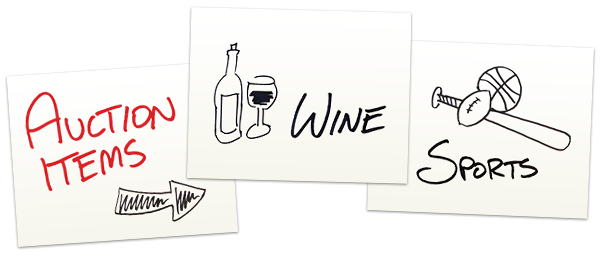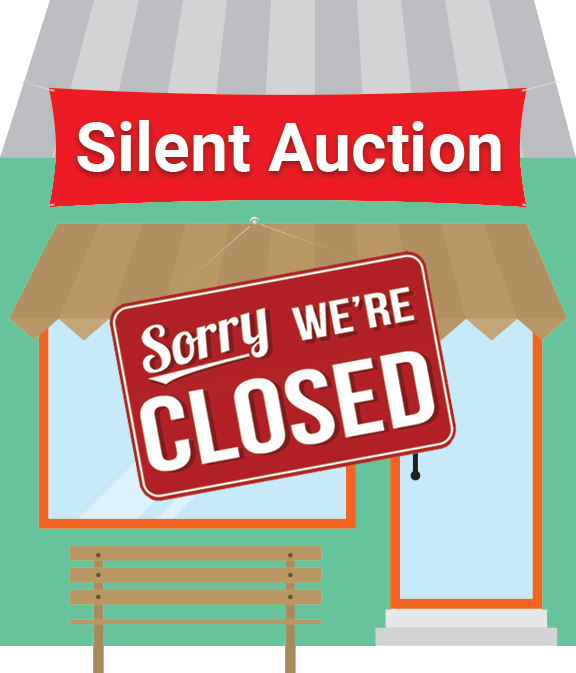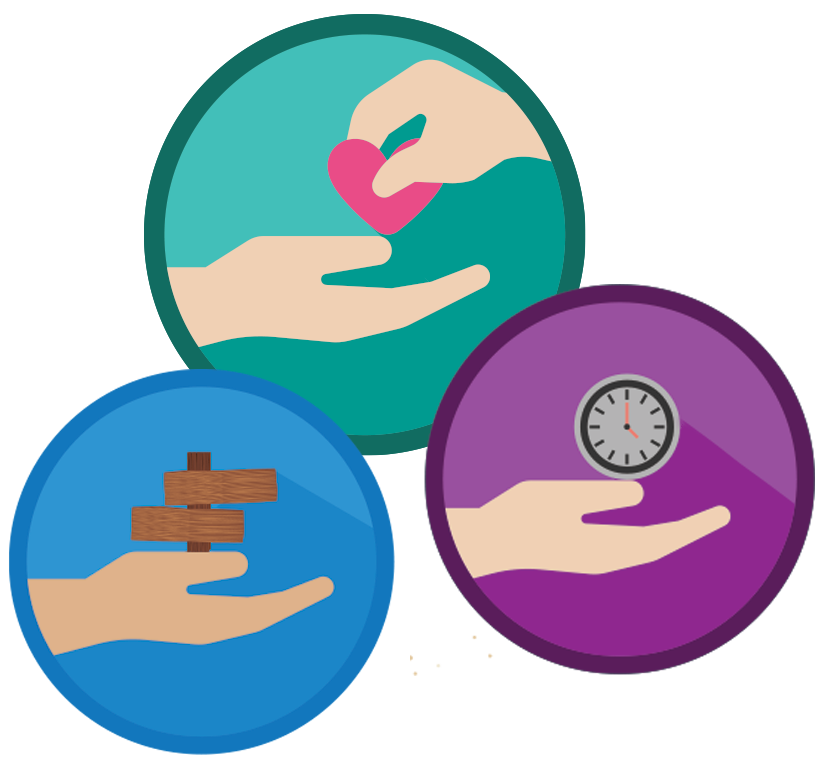In recent weeks, we have discussed strategies to help your silent auction draw in as much revenue as possible by procuring buzzworthy auction items, prepping donors to bid and setting appropriate opening bids.
What about running the event itself? While every event is bound to have a few hiccups, here are 3 things you can do before your silent auction that, when done right, will help the night go as smoothly as possible.
1. Designate these volunteer positions
Volunteers are an essential part of most organizations’ operations year-round. Here are a few volunteer positions that can benefit any auction:
Auction Monitors: Coach volunteers or auction committee members to oversee silent auction tables during the event, answer questions, and gather bid sheets when the auction closes. You may also want to designate a few auction monitors to explain high-end, featured items that may be unfamiliar or unique. For example, if one of your auction items is a no-risk consignment travel package, people may be more likely to bid if an auction monitor can explain the process of redeeming the trip and answer questions in person.
Registration table: In addition to a registration team that greets and checks in guests at the door, consider appointing a registration troubleshooter: someone who is familiar with the software and can serve as a point person for technical issues as they come up.
General donation table: Many attendees do end up outbid and walk away empty-handed. Give them a chance to spend their philanthropic dollars on your cause by setting up a table that makes it easy to make a donation in lieu of an auction item purchase. In addition to accepting general donations, consider setting up this table with a dedicated ask. You might quantify the benefit of a certain donation amount (such as “$100 provides 68 meals at our rescue mission“) or give the donor the chance to choose a target area or cause for their donation. Research shows people respond positively to specific asks.
2. Make clear signage
Think of a time you navigated a new place without any trouble—maybe an unfamiliar city, a big airport or even the mall parking garage. Chances are, a well-placed sign made the difference between getting where you needed to be within a few minutes and a few hours.
Likewise, clear signage at your event from start to finish can have a big impact on your guests’ overall experience.

The idea here is to anticipate questions attendees may have and, when possible, create and display simple signs that answer them. Not only does this save your staff and volunteers from answering the same questions over and over, signs are an excellent opportunity for branding and sponsorship (including your event logo, organization logo, mission statement, logos of your biggest donors, etc).
Some good signs to have:
- Parking lot. Is there valet? Parking validation? Let guests know quickly where to park.
- The bar. What drinks are available? At what prices?
- Registration / information tables. Consider organizing guests alphabetically (i.e. one table for last names A-N, one for last names O-Z)
- Silent auction room. Where is the entrance? What time does the silent auction begin and end? If items are sorted, what is each table’s category (sports, memorabilia, travel, etc.)?
- The evening’s agenda
- Restrooms
- Silent auction items (Stay tuned for a post later this week regarding essential details to include in your silent auction display sheets, plus links to download easy-to-use, customizable templates.)
3. Stagger the bidding schedule
When planning the agenda for your silent auction, try to stack your closing times by section, beginning with low-end items and ending with the most valuable, featured items.
For example, your emcee or auctioneer might announce the closing of the dining and entertainment section in 5 minutes, then close it out; then announce the closure of the memorabilia section; then announce the closure of high-end items like electronics and travel packages. (Check your sound system to make sure these announcements are easy to hear throughout the silent auction room.)
 This creates a sense of urgency for bidders; allows auction monitors to collect sheets in segments; and gives the auctioneer a chance to highlight items that are still great deals, aren’t getting enough bids, and most importantly, have the potential to raise the most revenue (like consignment travel packages that can be sold to multiple bidders).
This creates a sense of urgency for bidders; allows auction monitors to collect sheets in segments; and gives the auctioneer a chance to highlight items that are still great deals, aren’t getting enough bids, and most importantly, have the potential to raise the most revenue (like consignment travel packages that can be sold to multiple bidders).
A note on closing times: If you choose to publish a silent auction closing time, stick to it. Extending the closing time encourages waiting until the last minute to bid, which can limit how high bidding goes, and may be negatively perceived by those who placed their bids in time. (For this reason, some auction planners choose not to publish the closing time at all and only advertise a “doors open” time.)
How will your auction attendees remember their night? While they may not leave your event raving about all the wonderfully helpful signs or the organized schedule they encountered, they will have been provided the smoothest “shopping spree” experience possible—leaving them with a wonderful impression of your event, organization and mission.
And as mentioned above, we want to make the silent auction planning process as easy as possible. We are excited to roll out an easy-to-use templates for silent auction item displays shortly here on Winspire News, so stay tuned!
{{cta(‘8674e2e4-2c22-4137-bbcd-80f53f1a3f48′,’justifycenter’)}}

